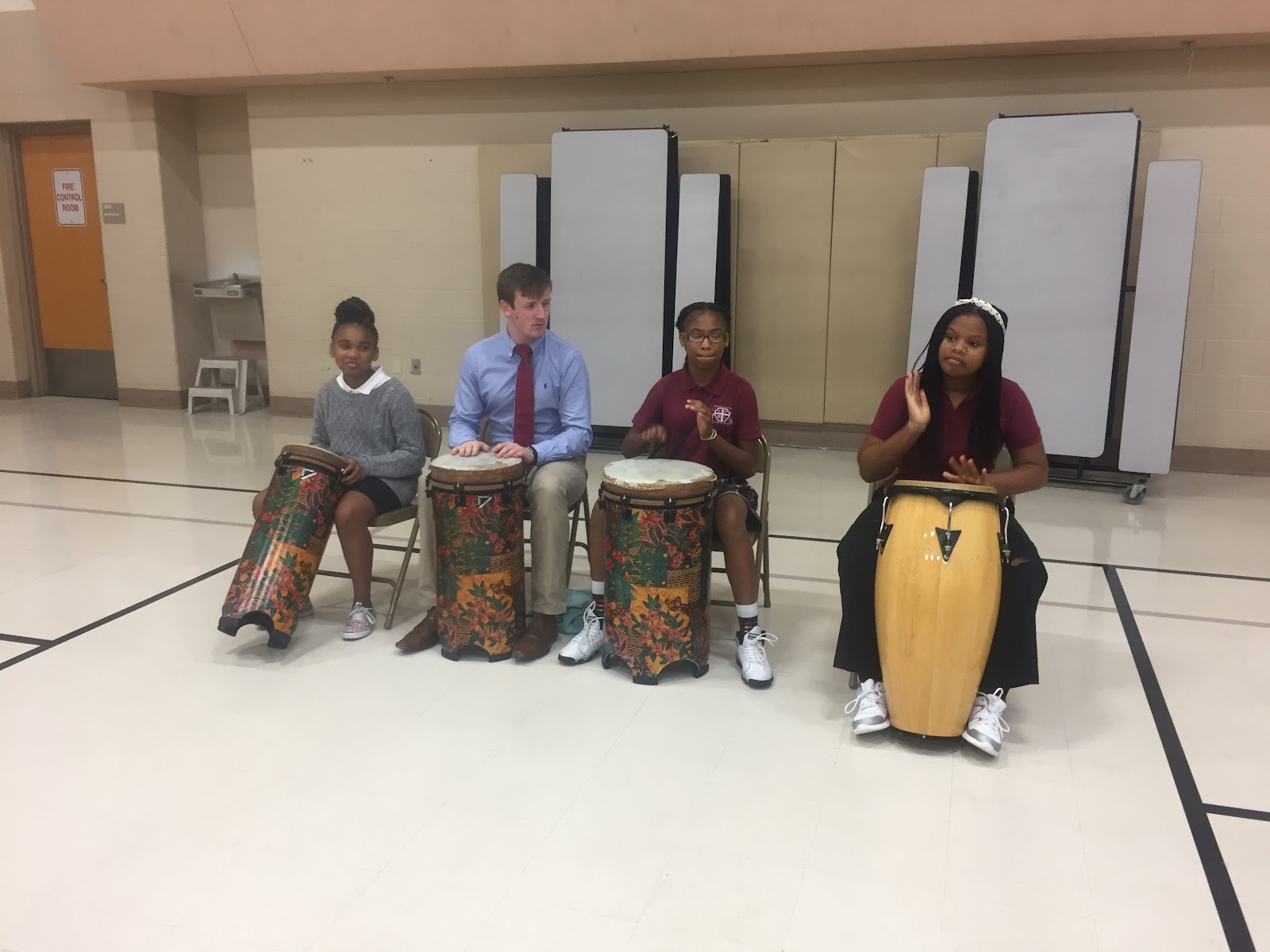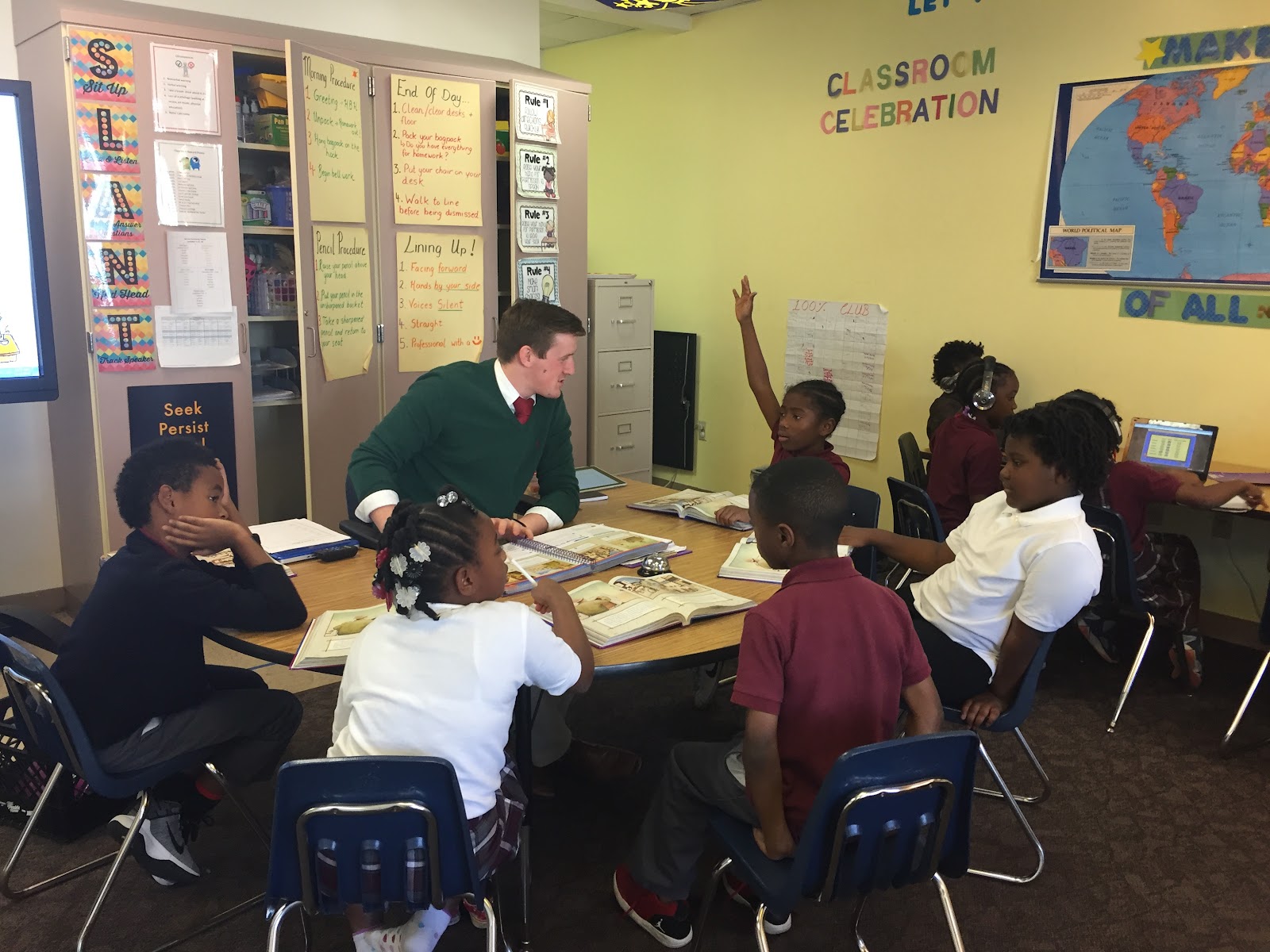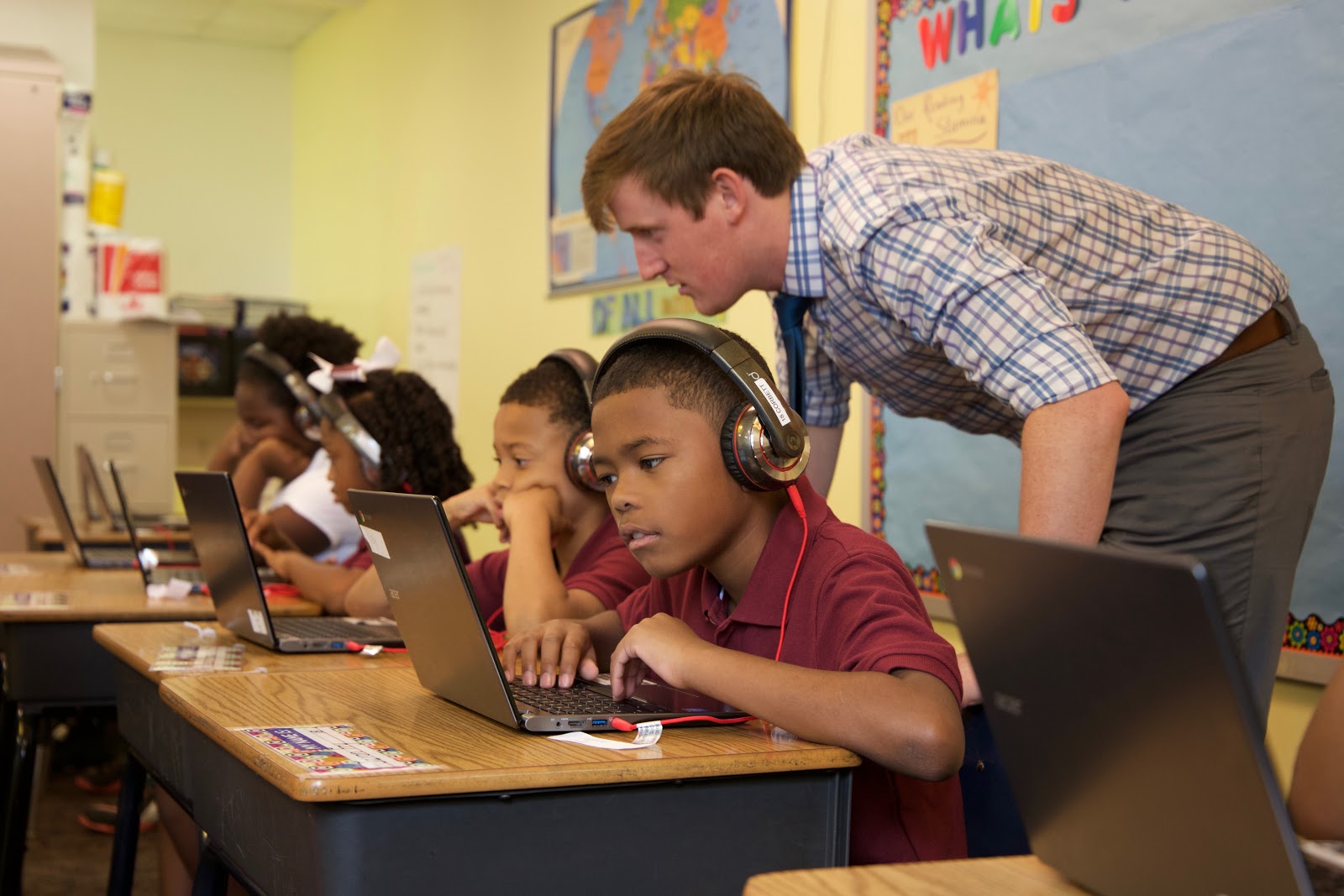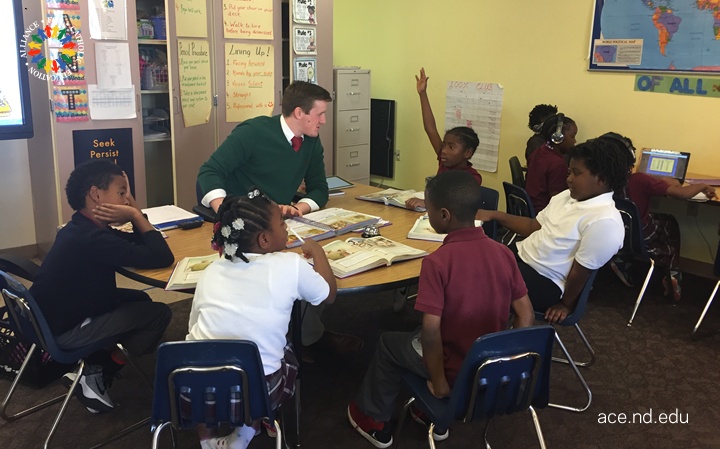"Cheers!" Ian called to me in his thick Irish accent with a huge smile on his face as his classroom of third graders burst into giggles. Most of Ian's students had never heard of Ireland before he began teaching at Holy Angels this fall, but it's safe to say that they are fans of the Emerald Isle now simply because it is the home of their beloved Mr. Corbett.
After beginning his teaching career in Ireland, Ian taught in Sacramento, California, as an ACE Teaching Fellow for two years and then answered the call this year to teach at Holy Angels as a member of the Remick Leadership Program.

Ian started the school year with a large class of third- and fourth-grade students that presented him with quite a few challenges. The third-grade students had four teachers in the previous school year alone, and the fourth-grade students had three. However, Ian, Principal Matt Goddard, and the ACE team eventually decided that his class needed to be split into two separate grade levels if the students were to receive the care and attention they deserved. Ian now serves as the third-grade teacher at Holy Angels, while maintaining his relationship with the fourth-grade students by teaching their religion class and interacting with them outside of class.
Though Ian's class has undergone significant changes this year, he remains steadfast to his commitment to helping his students achieve their goals. Because Ian has students working at anywhere from a kindergarten to a third-grade level in his class, he appreciates that the blended-learning model allows each of his students to receive instruction that is targeted to their specific levels and empowers him to make more targeted instructional interventions.

"Blended learning has allowed me to use data collected through the software to intentionally plan curriculum and inform my instruction," Ian said. "Additionally, it highlights which key skills students are missing and allows me to re-teach these skills as we work towards grade level."
Ian clearly appreciates certain aspects of the blended-learning model, but he also constantly strives to improve it. This past semester, Ian noticed that his students were struggling with engagement at their Chromebook station. To increase student autonomy and improve their concentration, Ian developed a system that allows his students to work in short increments and choose between a few different software programs as long as they fulfill a minimum time requirement on the core instructional program, i-Ready.
"My greatest challenge is that of keeping the students engaged at the blended learning station, but I have found that giving them autonomy has helped to overcome this challenge," he said.

When I asked Ian what other teachers should know before they start blended learning, he stressed that expert knowledge is crucial: knowledge of your students, what blended learning is, what a successful blended-learning implementation looks like, how to use the software programs, and what data is important.
I hope that these posts are helping to share and communicate our knowledge, but we would love to learn from you as well! Please send an email to eanthony@nd.edu if you would like to share what you have learned with others on the Higher-Powered Learning blog.
 Alliance for Catholic Education
Alliance for Catholic Education
